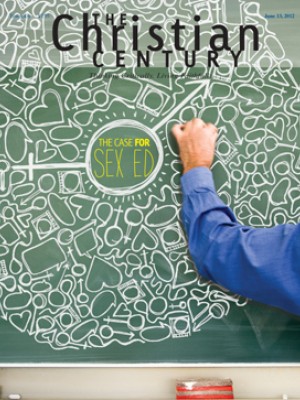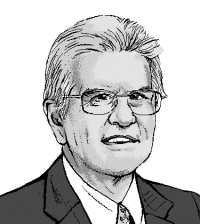The Orthodox in Africa

The worldwide expansion of Christianity over the past century is a tide that has lifted virtually all denominations—with one apparent exception. A hundred years ago, any account of the Christian world would have recognized three great streams: the Roman Catholic, Protestant and Orthodox. After 1917, though, the Orthodox churches suffered a long period of disastrous persecution and disruption, preventing them from engaging in anything like the global missionary expansion that has built such powerful new foundations for other churches. Today, many Orthodox churches are based in European countries that are faced with an alarming demographic decline. At first sight, then, in terms of raw numbers, the Orthodox future looks grim.
Few non-Orthodox observers would be surprised at this lack of global expansion, as they generally think of Orthodoxy strictly in ethnic terms, whether Russian, Greek, Serbian or Arab. In the film My Big Fat Greek Wedding, the non-Greek Ian accepts Orthodox baptism as a means of winning his sweetheart. He declares after the ceremony: “Now I’m really Greek!” If a religious conversion means no more than honorary admission to a given ethnic group, there seems little reason to consider it.
Read our latest issue or browse back issues.
Yet Orthodoxy, past and present, has far more of a global presence than we might expect. Historically, Orthodoxy was no more tied to its ethnic roots than was French Catholicism or English Anglicanism, both of which made mighty advances on the mission frontier. Ironically, in view of the stereotype, Orthodox missionaries not only existed but proved to be creative and even heroic. When the early 19th-century Russian Empire tried to convert the native peoples of North America, missionary pioneers like St. Herman of Alaska struggled to prevent colonial officials from oppressing their Aleut converts, and they moved quickly to create a written language in order to translate scriptures and other texts.
Numerically, the push into a bygone Russian America had little long-term impact on reshaping the geography of the faith, but elsewhere—depending on how we define Orthodoxy—that tradition does indeed flourish outside Europe. Although the ancient churches of Egypt and Ethiopia have long-standing theological disagreements with both Rome and Constantinople, they are commonly counted as “Oriental Orthodox,” and they share many traditions—common patterns in liturgy and in monastic practice—with the Eastern Orthodox of Greece or Russia. If we take all those different groupings as segments of one broadly defined Orthodox world, then that world becomes both larger and vastly more diverse. By this standard, around a fifth of all Orthodox believers—some 50 million people—actually make their homes in the continent of Africa.
Also in Africa we find a native Orthodoxy that represents a wholly new planting, and it recalls the surging Catholic or Anglican churches that have enjoyed such vast success across the continent. Although the numbers involved are small, local-grown Orthodox churches are obvious enough on the ground to puzzle scholars. These congregations aren’t descended from the old imperial churches or from more recent European missions, so what are they? Should we perhaps classify them as a bizarre variety of African Independent Church, one that happens to follow an ancient liturgy?
The inspiring story of African Orthodoxy represents in miniature so many of the themes in the wider development of African Christianity. At the end of the 19th century, many nationalist-minded native Christians became dissatisfied with the inferior status they were offered in mission churches and sought a fuller version of the faith. For some at least, Orthodoxy proved immensely attractive. Some activists were thrilled by the heroic anticolonial resistance of Orthodox Ethiopia. Others read their way into Orthodoxy, as they searched for the ancient trunk from which Anglicanism and Protestantism had arisen.
Slowly and often clumsily, these innovators and dissidents built what they believed to be Orthodox churches but which bore little resemblance to any historic reality. Gradually, though, these would-be Orthodox made contact with the authentic ancient patriarchates, especially in Alexandria, and most came to accept the whole structure of belief and practice. One famous pioneer, Uganda’s Reuben Spartas Mukasa, ended his life as Bishop Christophoros of Niloupolis.
Colonial authorities and European missionaries alike treated the new Orthodox suspiciously, seeing them as a manifestation of sinister African nationalism. In turn, that reputation gave the churches an image of sturdy independence that would gain them popular support when nations like Kenya, Uganda and Tanzania gained full independence.
In raw numbers at least, this native East African Orthodoxy remains marginal, with at most a million adherents, but that tiny scale belies its symbolic importance for the future of the Orthodox churches. Most important, these churches ensure that the emerging African Christianity will include the full spectrum of Christian traditions.







